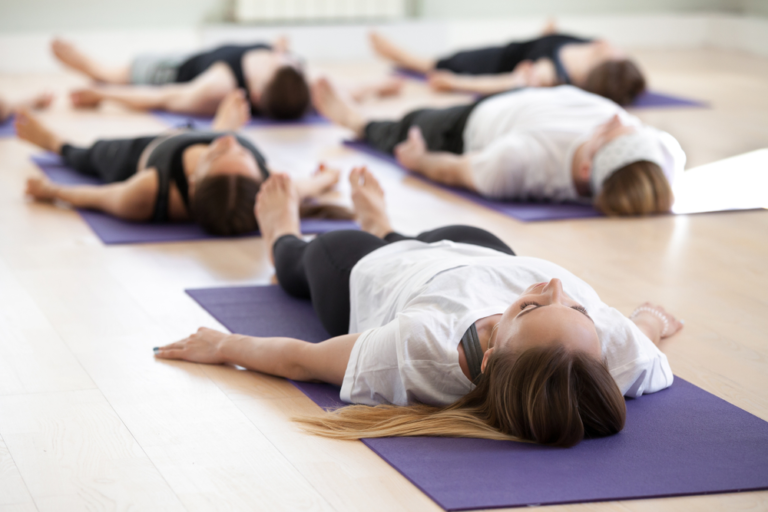Breathwork Before Sleep: The Ultimate Guide to Natural Insomnia Relief Routines.
Hello, my dear friends!
We are your loyal yoga instructors and we are very pleased to see you. When we say that the distance between your hectic day and the time when you can sleep is like a long highway, you can say that we managed to take thousands of people through a mind-cleansing evening meditation and they felt that that distance seemed to be huge. You have the urge to turn off; however, your mind is vibrating like a smartphone on full blast.
You are not alone. Insomnia and bad quality of sleep nowadays have become extremely widespread in our hectic world and leave us exhausted, stressed and unconnected. However, there is marvelous news: you just have the most effective, all-natural weapon to fight this, your breath or pranayama.
We are going to explore in detail today and make your nightly unwinding a holy, powerful ceremony. As well as how to breathe, we will discuss why the practices are the key to the restoration of the most relaxing deep sleep.
The Theology of Breath and the Science of Sleep.
Your nervous system is going to be the means to access natural sleep relief. We prefer to think about the body as a complex machine that exists in two basic modes:
- Sympathetic Nervous System (SNS): Your stress reduction system—your fight or flight response. It pumps the adrenaline and raises the heart rate and makes you alert. This works best when one has to work productively or on an emergency, but when it is left on at night, it is the biggest culprit of insomnia.
- The Parasympathetic Nervous System (PNS): This one is the relaxation system, the system that is called the “rest and digest” or “rest and restore” system. It decelerates the heart rate, drops blood pressure and gives the body an indication that it is safe to relax and heal.
Pre-sleep breathwork aims at deliberately relaxing the SNS and engaging the PNS. By slowing down and deepening your breath intentionally, you give a direct message to your brain through the vagus nerve (our longest cranial nerve), telling your brain, “All clear, time to deep relax.” It is this shift that is the key to falling asleep even more quickly and staying in that blissful, unbroken sleep.
Breathwork Before Bed: Your 3-Step Routine.
This sequence is aimed at exercising in bed. Turn the lights down, grab some warm socks and we shall start you out on your peaceful sleep.
Step 1: Belly Breathing (Diaphragmatic Breathing)

Also Read: The Science of Auras and How Yoga Affects Your Energetic Field
Also referred to as Dirgha Pranayama (Three-Part Breath) or Abdominal Breathing, the practice assists you in utilizing the most effective breathing muscle, the diaphragm. A symptom of stress is that most of us inhale shallowly to the chest, which is a breathing symptom. The transmission of breathing into the belly is the resetting of the entire breathing pattern.
The Practice (5 Minutes):
- The Position: Lie on your back, either flat or slightly raised on pillows. You may bend your knees when you are experiencing some pressure in your lower back. Put one hand around the upper part of your chest and put the other hand flat on your belly (just below your ribcage).
- The Breathing In: Breathe in slowly through your nose, with your eyes closed. Breathe the whole lot down to your belly and you can feel the hand upon your abdomen swell up. Your chest hand must be in a relatively still position.
- The Exhale: Expire slowly through your nose or slightly parted lips. You can make the hand on your belly sink back towards the spine. You must have smooth breaths, which are quiet and painless.
- The Rhythm: All your attention should be paid to the up and down of your belly. Aim for a long, gentle rhythm. Count every breath in and out, making sure that the breath out is a little longer than the breath in. An example is that of 4 seconds to inhale and 6 seconds to exhale.
Why this is an effective sleeping technique: Diaphragmatic breathing is the relaxation technique. It stimulates the vagus nerve, which in turn slows your heart rate variability and physically prepares your body to have a good sleep.
Step 2: 4-7-8 Breathing Technique (Your Sleep Trigger)
This is an effective derivative of yogic pranayama that gained popularity as the relaxation technique of Dr. Andrew Weil. The deep inhalation and a further, prolonged exhalation soon fill your body with the feeling of a satisfied exhaustion, which eliminates the nervous thoughts of anxiety alleviation and persistent insomnia.
The Practice (4 Rounds):
- The Setup: Maintain the position of Step 1. Tongue When exercising, stick your tongue tip against the ridge of the tissue directly behind your upper front teeth and hold it all through the exercise.
- Prep: With a distinct and audible whoosh, blow out all when you exhale via your mouth.
The Pattern:
- Breathe in silently through your nose 4 times.
- Breathing Hold your breath (hold the air) for a count of 7.
- Slowly breathe in and out with your mouth (repeating the whoosh sound one more time, 8 times).
- Repeat: This is one cycle. Do not rush. Do this four times in all.
Why this actually works with sleep: The 7-second hold is a brief burst of mental attention that breaks the thought process. The 8-second breath out is the longest possible release of carbon dioxide, which goes to indicate that you are in a deep state of relaxation, which is basically the natural kind of tranquilizer for your nervous system. This rhythm takes on a near-automatic response of falling asleep faster.
Step 3: Alternate Nostril Breathing (Nadi Shodhana)

Also Read: Fasting and Yoga: Ancient Practices for Modern Health
This is a magnificent method of balancing the right hemisphere and the left hemisphere of the brain, as this practice is a classic yoga practice whose name is translated as a way of clearing channels of the brain. It encourages an alert mind and a complete state of relaxation and when it subsides, you will be feeling balanced, calm and sleepy.
The Practice (5 Minutes):
- The Preparation: This can be done lying down, but it is usually easier to begin sitting well in bed. Make Vishnu Mudra with your right hand: your index and middle fingers point toward your palm and your thumb, ring finger and pinky finger are not bent.
- The Hand Position: Make use of your right thumb to close the right nostril gently and try not to press hard.
- Left Inhale: Inhale peacefully and softly through your open left nostril.
- Switch: With your ring finger close your left nostril. On releasing your thumb, exhale slowly and fully with your right nostril.
- Right Inhale: Take a slow, deep breath through your right nostril.
- Switch and Exhale: Gently close your right nostril with your thumb. Breathe out fully via your left nostril while letting your ring finger drop.
- The Cycle: This represents a complete round; please continue for five minutes, breathing slowly and steadily while always inhaling on the same side that you exhaled from. Let your hand relax as you finish by exhaling from the left.
Why This Works For Sleep: In yogic philosophy, the left nostril is associated with Chandra (lunar energy)—you may notice the stark contrast to the right, which is associated with solar energy—cool, calm and welcoming. This breath pushes the energy of cooling and restful Chandra to the forefront, making it the perfect practice for bedtime and calming down anxious moments.
The most important thing is to be consistent. Treat these 15 minutes as non-negotiable self-care. And if you ever need guidance, Maa Shakti Yog Bali is always here to help you reconnect with your breath, your calm and your natural rhythm of rest. Over time, your body will associate these steps of yoga for better restful sleep and calming breathwork with the impending, sweet release into deep sleep. Your sleepless, anxiety-ridden nights will be gone, and you will enter a reality of restorative sleep.
Wishing you peace, calm and deep sleep tonight!







